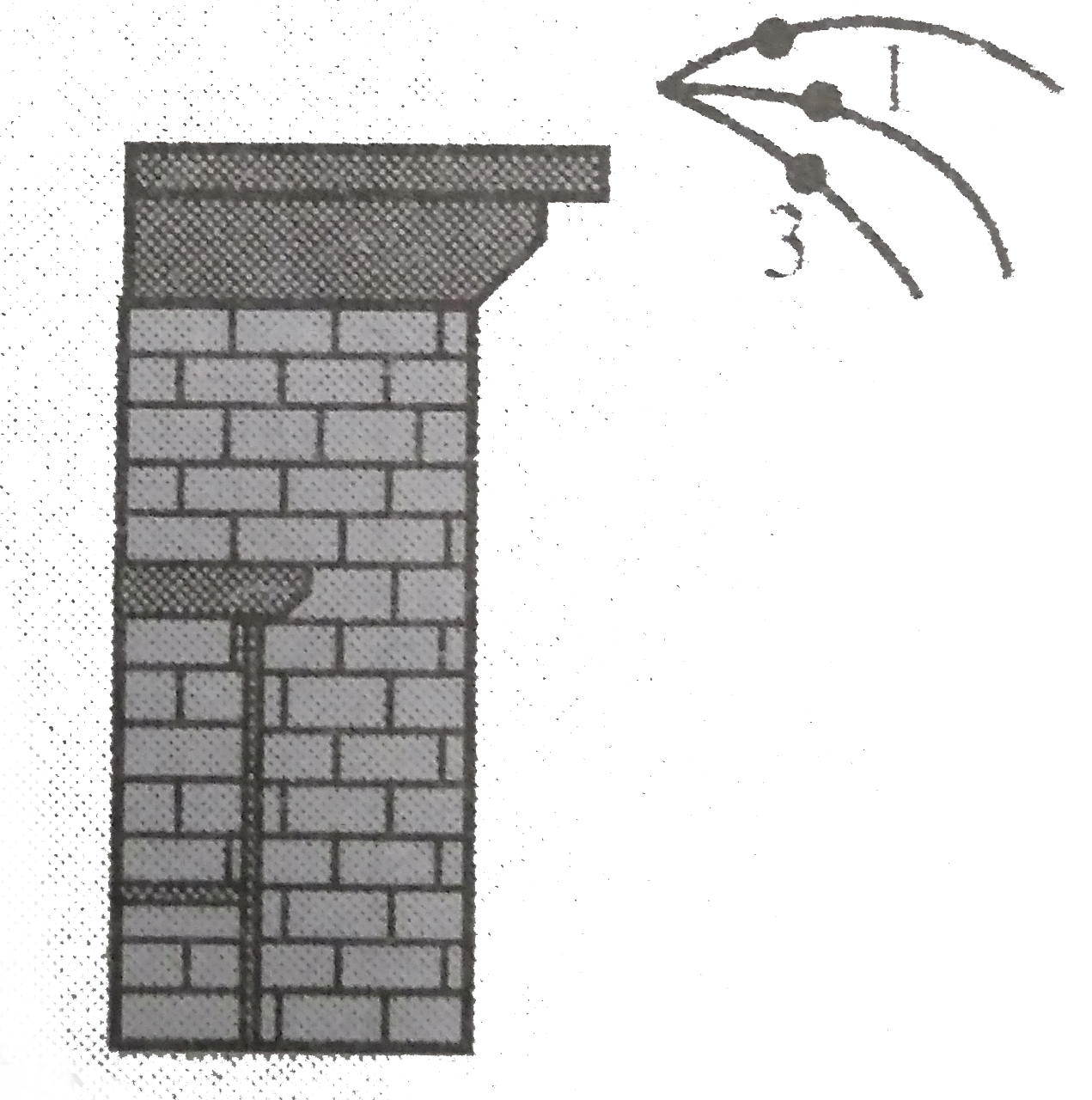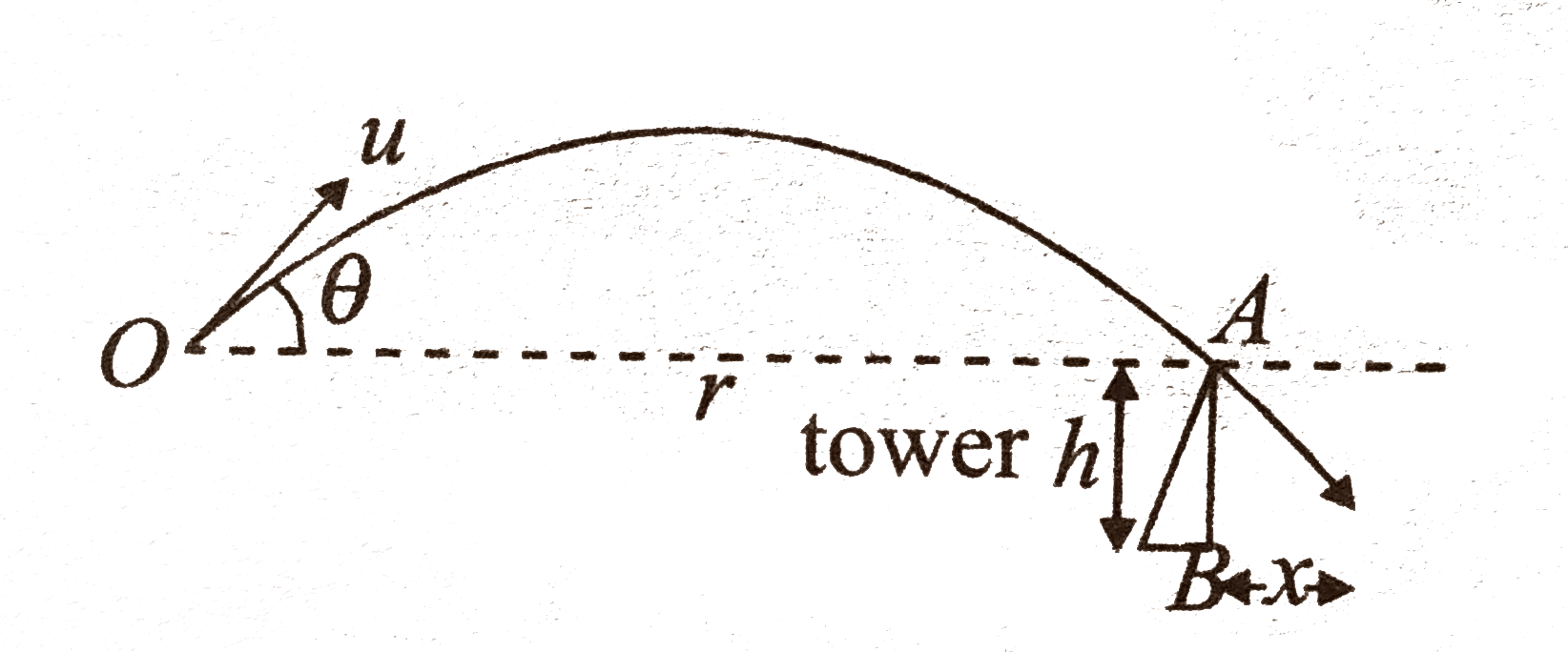Two small balls having the same mass and charge and located on the same vertical at heights h1 and h2 are thrown in the same direction along the horizontal at the same velocity v. The first vall touches the ground at a horizontal distance R from the initial vertical position. At waht heigth h2 will the second ball be at this instant? Neglect any frictional resistance of air and the effect of any induced charge on the ground.
The correct Answer is:h1+h2−g(Rv)2 .
To solve the problem, we need to analyze the motion of the two balls and their respective heights when the first ball touches the ground. Here’s the step-by-step solution:
Step 1: Understand the Motion of the First Ball
The first ball is thrown horizontally from a height h1 and travels a horizontal distance R before hitting the ground. The time t it takes to fall from height h1 can be calculated using the equation of motion under gravity:
h1=12gt2
From this, we can solve for t:
t=√2h1g
Step 2: Calculate the Horizontal Distance
The horizontal distance R covered by the first ball can be expressed in terms of its initial velocity v:
R=v⋅t
Substituting the expression for t:
R=v⋅√2h1g
Step 3: Analyze the Second Ball's Motion
The second ball is thrown from a height h2 at the same time and with the same horizontal velocity v. It will also take the same time t to reach the ground as the first ball, since they are thrown simultaneously.
Step 4: Calculate the Height of the Second Ball
We know that the second ball will fall for the same time t:
h2=12gt2
Substituting t from Step 1 into this equation:
h2=12g(√2h1g)2
This simplifies to:
h2=h1
Step 5: Determine the Height of the Second Ball at Distance R
Now, we need to find the height of the second ball when the first ball touches the ground at distance R. Since both balls are thrown at the same time and with the same velocity, the second ball will also have fallen a distance equal to h2 after time t.
The height of the second ball when the first ball touches the ground can be expressed as:
h2=h1−12gt2
Substituting t2 from the first step:
h2=h1−h1=0
Conclusion
Thus, at the instant the first ball touches the ground, the height h2 of the second ball will be 0 if both balls are thrown from the same height.
The first ball is thrown horizontally from a height h1 and travels a horizontal distance R before hitting the ground. The time t it takes to fall from height h1 can be calculated using the equation of motion under gravity:
The horizontal distance R covered by the first ball can be expressed in terms of its initial velocity v:
The second ball is thrown from a height h2 at the same time and with the same horizontal velocity v. It will also take the same time t to reach the ground as the first ball, since they are thrown simultaneously.
We know that the second ball will fall for the same time t:
Now, we need to find the height of the second ball when the first ball touches the ground at distance R. Since both balls are thrown at the same time and with the same velocity, the second ball will also have fallen a distance equal to h2 after time t.
Thus, at the instant the first ball touches the ground, the height h2 of the second ball will be 0 if both balls are thrown from the same height.
Topper's Solved these Questions
- BOOK - CENGAGE PHYSICS ENGLISHCHAPTER - COULOMB LAW AND ELECTRIC FIELDEXERCISE - Single Correct47videos
COULOMB LAW AND ELECTRIC FIELD
- BOOK - CENGAGE PHYSICS ENGLISHCHAPTER - COULOMB LAW AND ELECTRIC FIELDEXERCISE - Multiple Correct8videos
COULOMB LAW AND ELECTRIC FIELD
- BOOK - CENGAGE PHYSICS ENGLISHCHAPTER - COULOMB LAW AND ELECTRIC FIELDEXERCISE - Subjective Type15videos
COULOMB LAW AND ELECTRIC FIELD
- BOOK - CENGAGE PHYSICS ENGLISHCHAPTER - CENGAGE PHYSICS DPPEXERCISE - subjective type51videos
CENGAGE PHYSICS DPP
- BOOK - CENGAGE PHYSICS ENGLISHCHAPTER - ELECTRIC CURRENT & CIRCUITSEXERCISE - Kirchhoff s law and simple circuits15videos
ELECTRIC CURRENT & CIRCUITS
Similar Questions
Two projectiles thrown from the same point at angles 60∘and30∘ with the horizontal attain the same height. The ratio of their initial velocities is
View SolutionTwo particale of same mass and charge throw in same direction along the horizonal with same velocity v from two didffent heights h1 and h2 (h1<h2). Initially they were located in the same vertical line. Select the corredct alternative (s).
View Solution
Knowledge Check
- Question 1 - Select One
Two balls are projected at an angle θ and (90∘−θ) to the horizontal with the same speed. The ratio of their maximum vertical heights is
A1:1Btanθ:1C1:tanθDtan2θ:1
A ball is thrown vertically upwards from the top of tower of height h with velocity v . The ball strikes the ground after time.
View SolutionThere are two angles of projection for which the horizontal range is the same. Show that the sum of the maximum heights for these two angles is independent of the angle of projection.
View SolutionThree identical balls are thrown from the top of a building, all with the same initial speed. As shown in figure., the first ball is thrown horizontally, second above horizontal level, and third at an angle below the horizontal. Neglecting air resistance, rank the speeds of the balls at the instant each hits the ground.
 View Solution
View SolutionA ball is thrown from a point in level with velocity u and at a horizontal distance r from the top os a tower of height h.
At what horizontal distance x from the foot of the tower does the ball hit the ground ? View Solution
View SolutionA body is thrown with the velocity u=12.0ms−1 at an angle of α=45∘ to the horizon. If it touches the ground at the distance s from the point where it was thrown. From what height h should stone be thrown in a horizontal direction with the same initial velocity u so that it falls at the same spot ?
View SolutionA stone projected from ground with certain speed at an angle θ with horizontal attains maximum height h1 when it is projected with same speed at an angle θ with vertical attains height h2. The horizontal range of projectile is
View SolutionA body projected horizontally with a velocityv from a height h has a range R.With what velocity a body is to be projected horizontally from a height h/2 to have the same range ?
View Solution

